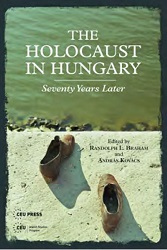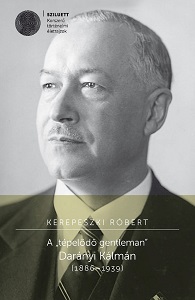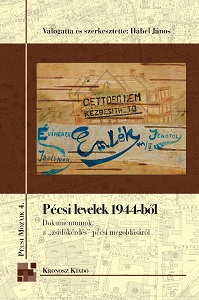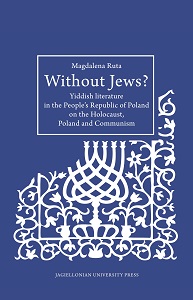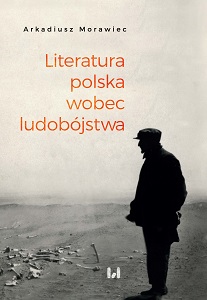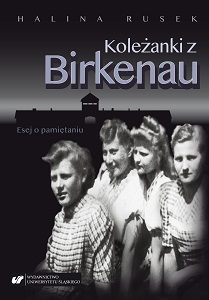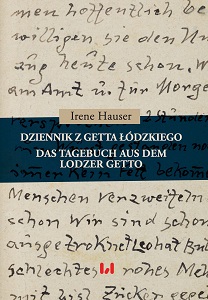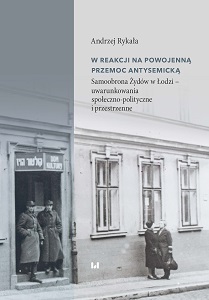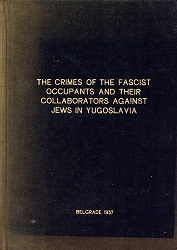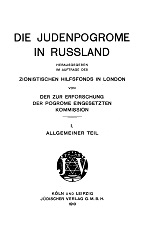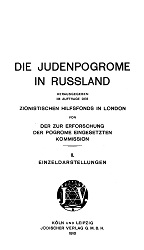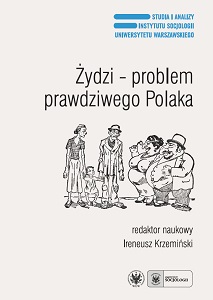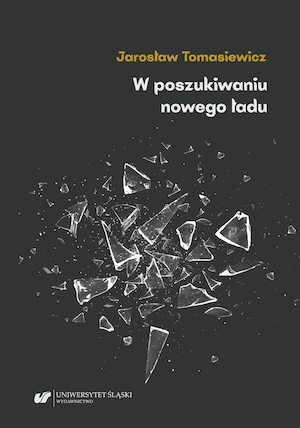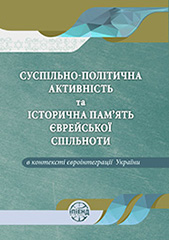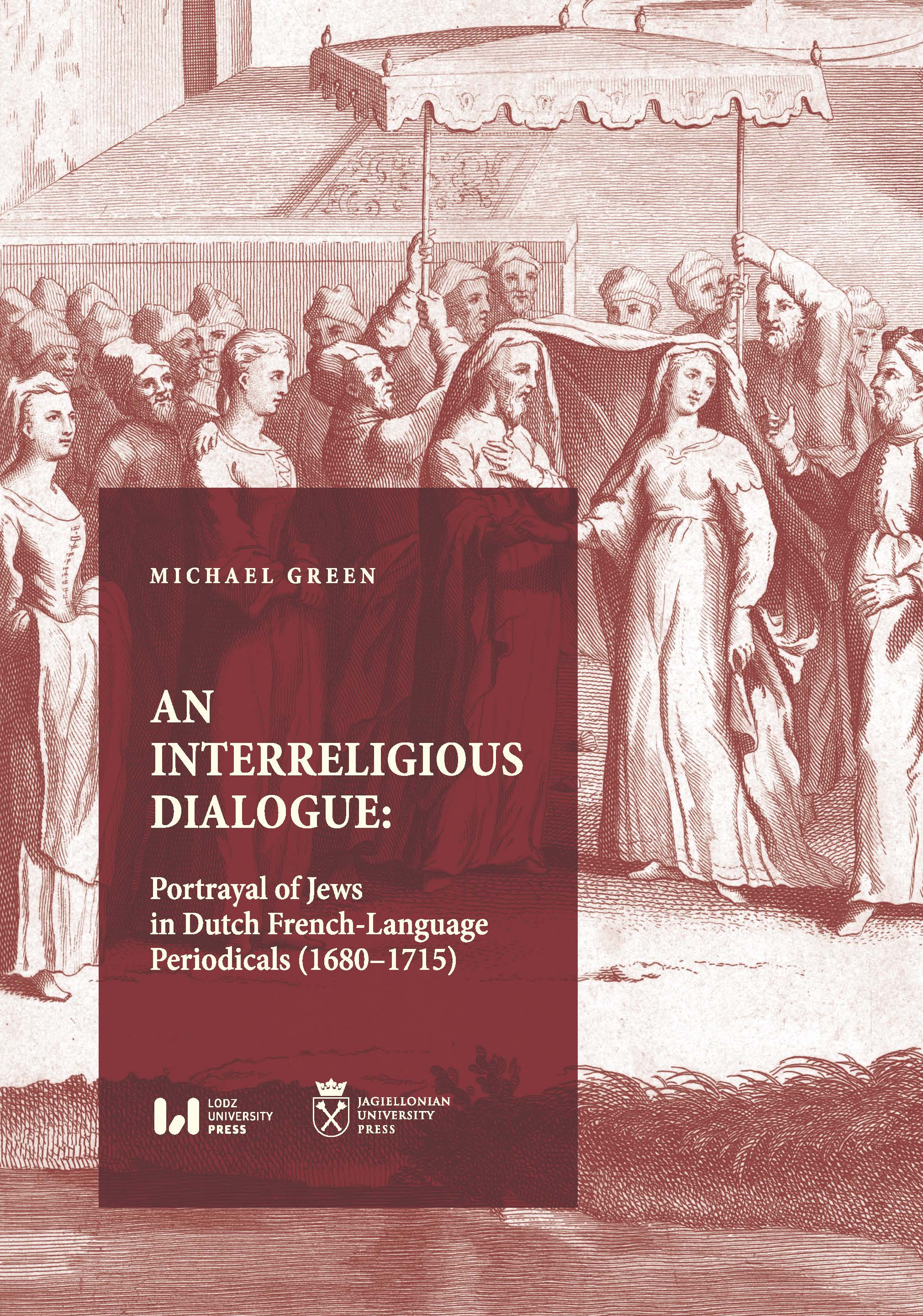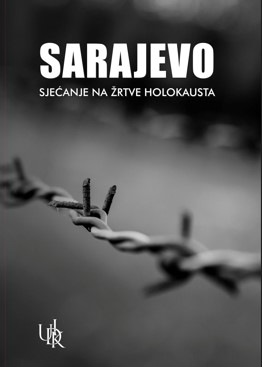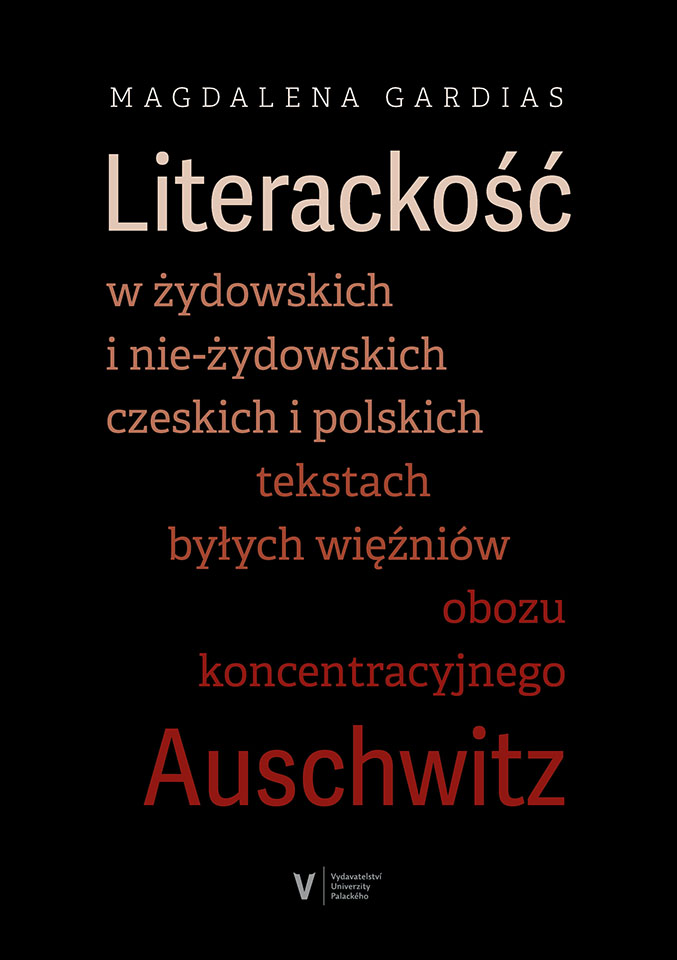Author(s): / Language(s): Hungarian
This present volume of the Kronosz Publishing presents the results of two independent but still closely interconnected local history research projects.The introductory study, which was written by István Károly Vörös, functions as a narration, summing up the most significant events taking place in Pécs between the 19th March, 1944 and the spring of 1945. This part of the book also helps the reader to understand the circumstances of origins of the contemporary documents. It plays an important role in terms of the contextualization of the topic.The study starts the narration on the 19th March, 1944, when the troops of the Deutsche Wehrmacht and the SS groups invaded Hungary in order to prevent the country from the quitting from the war. German soldiers arrived to Pécs by crossing the nearby southern border. This brought fundamental changes in every aspect of fife both on national and on local levels. Governor Miklós Horthy stayed in his office and on the 22nd of March, he appointed the government of Döme Sztójay who proved to be ready to collaborate with the occupying forces. He made this all due to the fact that with the aid of the Germans, an old dream of “political racialists” could have been realized. Namely, a „surgical removal” of the Hungarian Jews’ could have occurred from the body of the nation and the complete plunder of the Jewish population.In Pécs, the personnel remained unchanged after the nomination of the new government on the basis of political reliability, therefore it was the mayor, Lajos Esztergár and his apparatus of municipal officials who accomplished the part of the city’s “de-Jewing” as well as the transfer of the Jewish people’s wealth to „the Aryans”. Their activities were justified by the regulations depriving the Jews of their rights, issued by the new government shortly after their inauguration.Jewish communities and Jewish associations were disbanded all over the country and they were replaced by the Hungarian Central Council of Jews, which was subordinated to the provisions of the SS. The formation of the local Jewish Central Councils were given instructions partly from the national centre and partly from the leaders of the local administration and the militia. In Pécs, the last head of the Jewish community, József Greiner lawyer became the leader of the local Jewish Central Council.The various statements and orders connected to the submission of the Jews’ personal belongings (radio, telephone, bicycle, typewriter) ordered by the government proved to be only the preludes to the ever escalating anti-Jewish legislation. These regulations included the census of the Jews, the travel ban, the obligation to wear yellow “Jewish Star”, restrictions on shopping at the market and on private bank transactions, as well as locking up of shops and factories of Jewish ownerships.This latter step affected more than 200 commercial and industrial businesses in Pécs. As a result of the war conditions, the public provision of goods and the supply of industrial production plants with raw material became rather difficult. Due to these circumstances, the unexpected closure of Jewish businesses caused serious problems: extensive damage occurred due to looting and the spoilage of goods. According to the prevailing perception of time, it was not the Jewish owners who suffered the damage themselves, but the nation as a whole. In order to relieve the tension accumulating in the population of the city, the local authorities, over time, opened some 25 major Jewish stores, naturally under the management of Christian leaders and staff.An important milestone during the “largest social operation” proved to be the regulation on the appointment of the residence of the Jews, which was released on the 28th of April, 1944. Mayor Esztergár selected the (contemporary) south-western outskirts of the city (close to the railway tracks) to the “segregated sector for the Jews”. This included apartment building called MÁV-bérház (Blocks of Flats of the Hungarian State Railways) with altogether 90 flats, and 50 houses in the surrounding streets. More than 2700 people were concentrated in this area whose gates were finally closed on the 20th of May 1944. The place was so crowded that some people lived in the basement and on the corridors of the building. The ghetto was surrounded by a fence of a two-meter-high hedge, and the construction works were paid by the Jews themselves. They even had to work during in the construction ground together with a squadron of forced labourers.The Jews were allowed to leave the ghetto only when they went out to work (i.e. in the city’s forestry or horticulture.). In these cases, they were accompanied of course by armed escorts. The ghetto was guarded every day and night by the agents of the city police authorized to open fire if it was needed. As a result of these instructions, Jews soon became completely isolated from the other inhabitants of the city: it was forbidden to keep any contact with other people, no letters or parcels were delivered to the ghetto, while the single phone line, which belonged to the Central Council of Jews, was cut off in mid-June as well.Details connected to the deportation of Jews lining in the Southern Transdanubian ghettos were discussed in Siófok, on the 22nd of June by the administrative and executive leaders of the affected settlements. On the 29th of June, the liquidation of the ghetto of Pécs began. Firstly, the last remaining values, personal documents, and food were seized from the Jews, then they were walked in groups of hundreds by gendarmes and German soldiers to the Lakits Barracks, where they were accommodated in riding stables with a ground covered by a mix of manure and straw.The existing disastrous hygienic conditions were further aggravated by the fact, that the inhabitants of the Mohács and Bonyhád ghettos were also transported here at the beginning of July adding some 2300 people to the crowd. The Jews of Pécs and its surroundings were deported from this “point of concentration” on the 4th of July, while the Jews, who had been transported here from Mohács and Bonyhád, were deported on the 6th of July.While the Jews, who had been forced into the ghetto and had been deported suffered immense physical and mental pains, certain sections of the society of the city made efforts to get some parts from the wealth of the Jewish inhabitants of the city. Due to the lack of government regulations, the mayor’s office was constantly exposed to tremendous pressure. Besides the shops and businesses, the largest demand was for the Jewish-owned houses and flats. The selling off the Jewish shops and their equipment started as late as in September. The coup by the Arrow Cross in mid-October, and the pernicious approach of the front led to increasing haste and total chaos in terms of the practical implementation of the distribution of Jewish property.After the Red Army occupied Pécs on the 29th of November, Jewish men, who had returned from the labour formed the Jewish Council of Pécs. This, after the rapid assessment of the situation, focused on the one hand on the saving of the remaining assets, on the other hand – after the spring of 1945 – it made efforts to help and care for the returning Jews, who had been deported from Pécs.The other independent study of the volume is the publication of sources, compiled by János Habel. The selected sources from 1944 reveal events, worries and hopes having been tackled by the government and the administrative bodies, the mayor and the chief bailiff, the “early Christian” population, the Jewish Council, and the people qualified as Jews. These present the „weekdays” of the Holocaust in Pécs serving as a kind of detailed illustration for certain parts of introductory study.The editor points out that the complete reconstruction of the 1944 events and loval decisions in Pécs are not possible by the elaboration of official and private letters despite of the fact that thousands of documents were preserved. This is caused on the one hand because of the fact that some instructions and commands were given only orally, and on the other hand, due to the fact that the archives of quite few organizations and authorities, playing important roles in the events taking place in Pécs (as well) have been preserved. These documents include the sources of the Hungarian Royal State Police Headquarters of Pécs, the Nr. IV. Hungarian Royal Army Command Station of Pécs, the 4th District of Hungarian Royal Gendarmerie of Pécs, The Housing Department of the Mayor’s Office of Pécs, the Pécs Jewish Council, and the Pécs Office of the Arrow Cross Party.The sources are classified by the editor around the following subject-matter: 1. Who is considered to be a Jew? 2 The ghetto; 3 Property, 4. Other aspects of the “the Jew issue”. In order to offer a better overview, the extremely diverse source material of these main topics was further divided into thematic sub-sections, and the letters are presented in chronological order. The editor used the daily newspaper of Pécs titled Dunántúl [Transdanubia] to illustrate the social atmosphere of the events flashed by the documents. He sought to demonstrate how the mayor’s office and the government respectively used the only remaining local public media to manipulate the population, and induce (further) anti-Jewish sentiments and emotions.The title of the volume suggests that the writers of letters, addressees of the letters (or in many cases, both parties) were from Pécs, and that the vast majority of the sources presented are found in Pécs.
-------------------------------------------------------------------------------------
Der Band des Kronosz Verlags stellt den Interessierten die Ergebnisse zweier von einander unabhängig laufenden, aber durch ihr Thema miteinander eng zusammenhängenden ortshistorischen Forschungsarbeiten vor.Die Einführungsstudie von István Károly Vörös ist als Narration zu verstehen, die die wichtigen Pécser Ereignisse zwischen dem 19. März 1944 und dem Frühling 1945 zusammenfasst. Sie hilft beim Verstehen der Entstehungsumstände der Zeitdokumente, die den zweiten Teil des Bandes bilden und bei derer Einbettung in den historischen Kontext.Die Studie tritt in die Erzählung der Geschichte am 19. März 1944 ein, als um den Aussprung Ungarns aus dem Krieg zu verhindern, das Land von Einheiten der Deu-tschen Wehrmacht und der SS besetzt wurde. Die deutschen Truppen gelang nach der Überschreitung der nahen liegenden südlichen Landesgrenze nach Pécs. Dieses Ereignis brachte grundlegende Änderungen in allen Bereichen des Lebens mit sich. Reichverweser Miklós Horthy blieb in seinem Amt und er ernannte am 22. März die Regierung von Döme Sztójay, die bereitwillig mit der deutschen Besatzungsmacht zusammenarbeitete. Das machte er umso lieber, da mit deutscher Hilfe alte Träume der ungarischen Rassenschützer in Erfüllung gehen konnten: Das „Ausoperieren“ der ungarischen Judenheit „aus dem Leib der Nation“ und deren totaler Ausraube.In Pécs wurden von der neuen Regierung keine Beamten wegen politischer Unzuverlässigkeit gewechselt, so vollzog der Bürgermeister Lajos Esztergár mit seinem Apparat den auf die Verwaltung zufallenden Teil der „Entjudaisierung“ der Stadt und die Arisierung des jüdischen Vermögens. Als Grundlage seiner Tätigkeit dienten jene antijüdischen, entrechtenden Verordnungen, die von der neuen Regierung bald nach ihrem Amtsantritt in Kraft gesetzt wurden.Die jüdischen Kultusgemeinden wurden landesweit aufgelöst, an ihre Stelle trat der Zentralrat der Juden in Ungarn, der unter der Verfügungsgewalt der SS stand. Die örtlich gegründeten Zentralräte der Juden erhielten die Weisungen zu ihrer Tätigkeit einerseits von der Budapester Zentrale, andererseits von den örtlichen Verwaltungsorganen und Ordnungskräften. In Pécs wurde der letzte Vorsitzende der Kultusgemeinde, der Anwalt József Greiner, der Leiter des Zentralrats der Pécser Juden.Die von der Regierung für die Juden vorgeschriebenen Erklärungen und Abgaben (Rundfunk- und Telefonapparate, Fahrräder, Schreibmaschinen) bedeuteten nur die Eröffnung der immer härteren judenfeindlichen Verordnungen. Dazu zählten u.a. die Zusammenschreibung der Juden, das Reiseverbot, das Tragen des sechszackigen „Judensternes“ am Außenkleid, die Begrenzung des Marktbesuches und die Begrenzung der Verfügung über die Bankkonten, des Weiteren die Beschlagnahmung jener Geschäfte und Betriebe, die in jüdischem Besitz waren.Die letzte Maßnahme betraf in Pécs mehr als 200 Handelsunternehmen und Betriebe. Wegen des Krieges wurden die Warenversorgung der Bevölkerung und die Rohstoffsicherung für die industriellen Betriebe ohnehin immer schwieriger. So verursachte die unerwartete Schließung der jüdischen Unternehmen weitere große Probleme. Durch das Verderben vieler Waren und spontanen Plünderungen entstanden hohe Schäden. Laut der damals herrschenden Auffassung betrafen die Schäden nicht die jüdischen Inhaber, sondern die „Gesamtheit der Nation“. Um die in der Bevölkerung entstandenen Spannungen zu mildern, ließ die städtische Behörde mit der Zeit 25 größere jüdische Geschäfte wieder eröffnen, natürlich ausschließlich mit christlichen Leitern und Angestellten.Die Verordnung über die Bestimmung des Wohnortes der Juden am 28. April 1944, bedeutete eine wichtige Station der „größten gesellschaftlichen Operation“ in Ungarn. Bürgermeister Esztergár bestimmte am damaligen südwestlichen Stadtrand, in der Nähe der Eisenbahnlinie den „für die Juden abgesonderten Stadtteil“. Er bestand aus dem Miethaus der Ungarischen Staatlichen Eisenbahnen mit 90 Wohnungen und 50 Einfamilienhäusern in den angrenzenden Straßen. Es wurden mehr als 2700 Menschen in dieses Gebiet gepfercht, das Tor des Gettos wurde hinter ihnen am 20. Mai endgültig zugesperrt. Die unerträgliche Gedrängtheit kann damit gut charakterisiert sein, dass auch in den Souterrains und auf den Fluren der Häuser Menschen wohnten. Das Getto war mit einem 2 Meter hohen Flechtzaun umgeben, den das Magistrat von den Juden selbst bezahlen ließ. Er musste teilweise sogar selbst von den Bewohnern des Gettos und teilweise von einer aus jüdischen Arbeitsdienstlern bestehender Einheit verfertigt werden. Die Juden durften nur für Arbeit (z.B. in der Försterei der Stadt, oder in den städtischen Gärtnereien) das Getto verlassen – natürlich mit bewaffneter Begleitung. Rund um das Getto leistete die Stadtpolizei Tag und Nacht Wachtdienst und verfügte über Schießbefehl. Die Juden wurden bald von den anderen Stadtbewohnern gänzlich isoliert: Es wurde jedwede Kontakthaltung mit ihnen verboten, auch die Post stellte im Getto keine Briefe und Pakete zu. Mitte Juni wurde dann auch die einzige Telefonleitung des Jüdischen Zentralrats abgeschaltet.Die betroffenen Verwaltungsleiter und Befehlshaber der Ordnungskräfte erfuhren an einer Konferenz am 22. Juni 1944 in Siófok die Details der Deportation der Juden aus ihren Städten. Dementsprechend wurde in Pécs am 29. Juni mit der Auflösung des Gettos begonnen. Den Juden wurden ihre letzten Habseligkeiten, Identitätsbescheinigungen und ihre Lebensmittel weggenommen und sie wurden zu Hunderten unter Bewachung der ungarischen Gendarmarie und deutscher Soldaten in die sogenannte Lakits-Kaserne getrieben.Dort wurden die Menschen auf dem mistigen Boden der Reitschule und der Pferdestände der Ställe untergebracht. Die hygienischen Bedingungen waren schon an sich katastrophal, aber die Lage wurde dadurch noch weiter verschlechtert, dass auch die Bewohner der aufgelösten Gettos von Mohács und Bonyhád, noch etwa 2300 Personen, am Anfang Juli hierher gebracht wurden.Von diesem „Konzentrationspunkt“ wurden die Juden aus Pécs und aus dem Pé-cser Kreis am 4. Juli, die aus Mohács und Bonyhád am 6. Juli nach Auschwitz deportiert.Indem den ins Getto gesperrten und später deportierten Juden unsägliche körperliche und seelische Leiden zuteil wurden, versuchten bestimmte Schichten der Stadtbevölkerung sich aus dem Vermögen der Juden einen Teil zu sichern. Das Bürgermeisteramt wurde von diesen Menschen unter großen Druck gesetzt, da die Regierung teilweise verspätet, bzw. teilweise widersprüchlich ihre Verordnungen über die Nutzung der jüdischen Vermögenselemente verabschiedete und bekannt machte. Neben den Geschäften und Betrieben der Juden zeigte sich das größte Interesse für ihre Häuser und Wohnungen. Der Pfeilkreuzlerputsch Mitte Oktober und die schnelle Näherung der Front führten zu immer größerer Kopflosigkeit in der Ver- und Austeilung des jüdischen Vermögens.Nachdem die Rote Armee am 29. November Pécs eroberte, gründeten die aus dem Arbeitsdienst nach Hause kehrenden Männer den Rat der Pécser Juden. Nach der schnellen Lageeinschätzung konzentrierte er seine Tätigkeit einerseits auf die Sicherung des erhalten gebliebenen Vermögens, andererseits im Frühling 1945 auf die Unterstützung der aus der Deportation Heimkehrenden und derer Versorgung.Der zweite selbständige Teil des Bandes ist eine Quellenpublikation, die von János Hábel zusammengestellt wurde. Die ausgewählten Dokumente gewähren Einblicke in jene Ereignisse, Sorgen und Hoffnungen, die den Bürgermeister, den Hauptgespan, die christliche Bevölkerung, die staatlichen und Verwaltungsorgane, den Zent-ralrat der Juden und jene Personen aktuell beschäftigten, die laut des Gesetzes als Juden zu betrachten waren. Die Dokumentenauswahl führt den Pécser „Alltag“ des Holocaust planmäßig vor Augen und dient so als detailreiche Illustration zu bestimmten Abschnitten der Einführungsstudie.Der Redakteur weist auch darauf hin, dass die Rekonstruktion der örtlichen Entscheidungsprozesse und der Ereignisse im Jahre 1944 trotz der vielen Tausend erhalten gebliebenen Dokumente aus privaten und offiziellen Briefen nicht möglich ist. Einerseits, weil gewisse Befehle und Anordnungen nur wörtlich ergingen, anderseits, weil die Archive vieler Organisationen und Behörden, die in den Pécser Ereignissen eine wichtige Rolle spielten, nicht erhalten blieben. Dazu gehören die Pécser Kommandantur der Ungarischen Königlichen Staatspolizei, die Pécser Ortskommandantur der Ungarischen Königlichen Armee, der Pécser Distrikt der Ungarischen Königlichen Gendarmarie, die Wohnungsabteilung des Pécser Bürgermeisteramts, der Pécser Zentralrat der Juden, das Pécser-Baranyaer Büro der Pfeilkreuzler Partei.Die Quellen wurden um folgende Hauptthemen gruppiert: 1. Wer ist als Jude zu betrachten? 2. Das Getto. 3. Das Vermögen. 4. Weitere Bezüge der „Judenfrage“. Innerhalb dieser Schwerpunkte wurde das weitverzweigte Quellenmaterial im Interesse der Übersichtlichkeit in thematische Unterkapitel geordnet. In den Letzteren wurden die Briefe in chronologische Reihenfolge gestellt.Zur Illustrierung des gesellschaftlichen Ambientes der durch die Dokumente dargestellten Ereignisse verwendete der Redakteur das Pécser Tagblatt mit dem Titel Dunántúl (Transdanubien). Damit wurde veranschaulicht, wie das Bürgermeisteramt, bzw. die Regierung das einzige örtliche öffentliche Medium zur Manipulierung der Bevölkerung, bzw. zu der (weiteren) Schürung der judenfeindlichen Stimmung und Gefühle benutzte.Der Titel des Buches macht einerseits darauf aufmerksam, dass die Briefschreiber, oder die Adressaten (oft beide) Pécser Bewohner waren und anderseits, dass die überwiegende Mehrheit der veröffentlichten Quellen in Pécs zu finden ist.
More...
